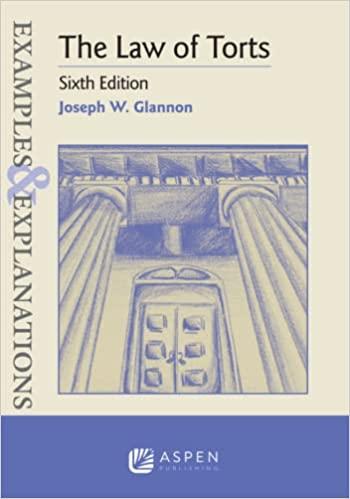Question
note i strictly report wrong answers ,attempt this Few published empirical studies have examined the design, implementation, and monitoring of customer relationship management (CRM)
note i strictly report wrong answers ,attempt this
\
Few published empirical studies have examined the design, implementation, and monitoring of customer relationship management (CRM) programmes at a practical level. The article develops a single embedded case study onDagbladet Brsen(http://www.borsen.dk), the largest publisher of businessrelated materials in Scandinavia. The article first introduces the reader to the philosophy behind CRM. Following that, it considers key areas of a fouryear long CRM programme and offer insights into the procedure that has been developed by SJP (http://www.sjp.dk), the consulting firm that was brought in to assist. The procedure is organized around eight areas: commitment of senior management, situation report, analysis, strategy formulation, implementation, management development, employee involvement, and evaluation of loyaltybuilding processes. Over the fouryear long CRM programme,Dagbladet Brsenincreased its newspaper circulation by 40 per cent and advertising revenue by 50 per cent, while total revenue more than doubled.
Question 1
Can proximal muscle weakness be more than that of the distal muscles in
cases of upper motor neurone lesions?
Question 2
In the absence of either myopathy or radiculopathy, could a pyramidal
tract lesion be diagnosed despite a distribution of weakness that is
proximal more than distal?
Question 3
Are brisk deep tendon reflexes, rather than hyperreflexia, pathognomonic
of pyramidal tract lesion?
Question 4
What is Wartenberg's reflex (sign), and is it diagnostic of a pyramidal
tract lesion?
Question 5
Must an extensor plantar response be present in order to diagnose a
pyramidal tract lesion even in the presence of weakness of pyramidal
distribution and other pathological reflexes?
Question 6
Is it common to find Babinski's sign positive in Todd's paralysis?
Question 7
In a case of paraplegia owing to an upper motor neuron lesion, does the
ability of the patient to sit indicate intact thoracic segments?
Question 8
Can the Brown-Squard syndrome be diagnosed with pyramidal
weakness of one lower limb and hypoaesthesia of the other lower
limb but with no dissociative sensory loss of the hypoaesthetic limb?
Question 9
Is there more than one method of demonstrating dysdiadochokinesia in
upper limbs?
Question 10
What is the difference between kinetic and intention tremors?213140
Step by Step Solution
There are 3 Steps involved in it
Step: 1

Get Instant Access to Expert-Tailored Solutions
See step-by-step solutions with expert insights and AI powered tools for academic success
Step: 2

Step: 3

Ace Your Homework with AI
Get the answers you need in no time with our AI-driven, step-by-step assistance
Get Started


